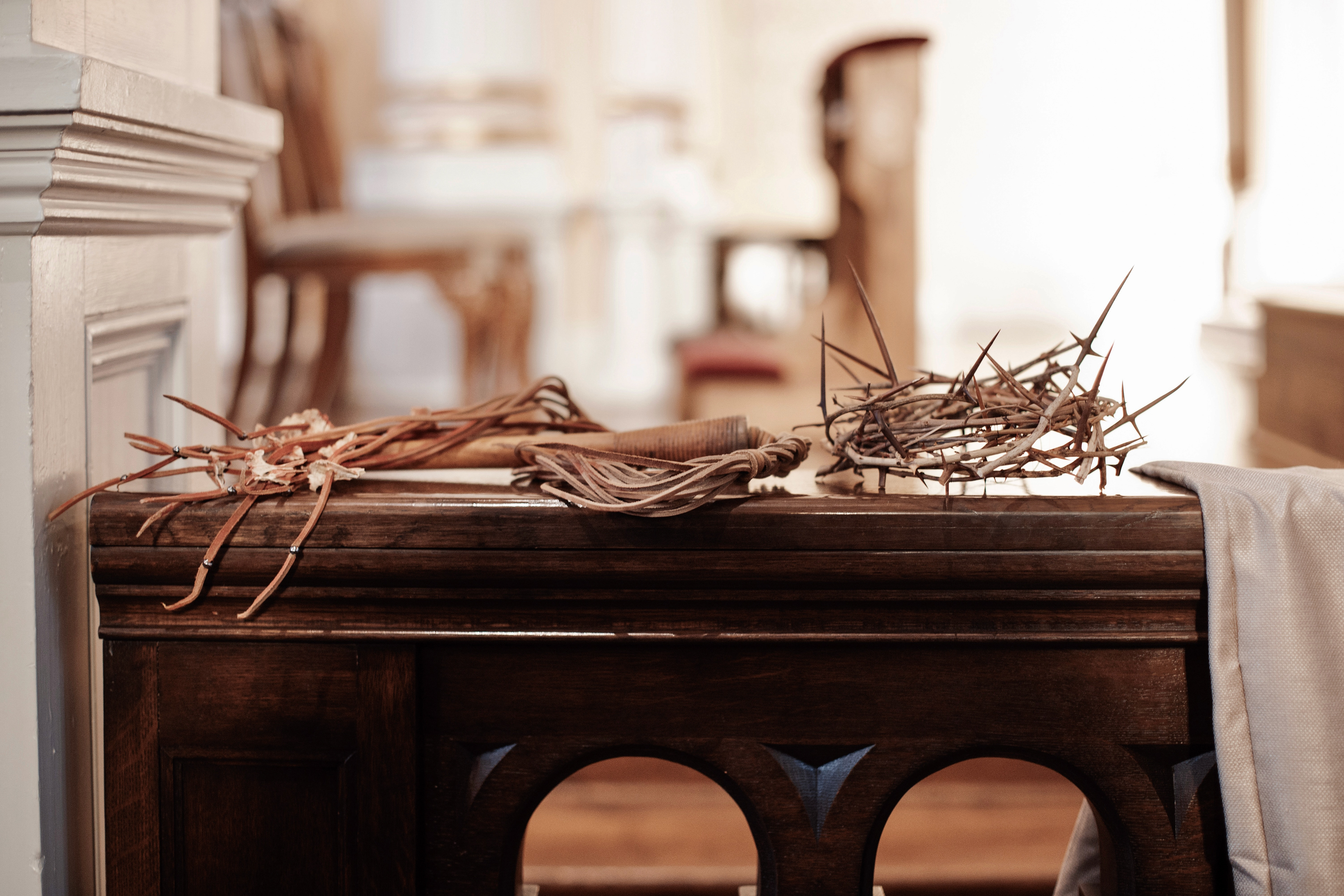
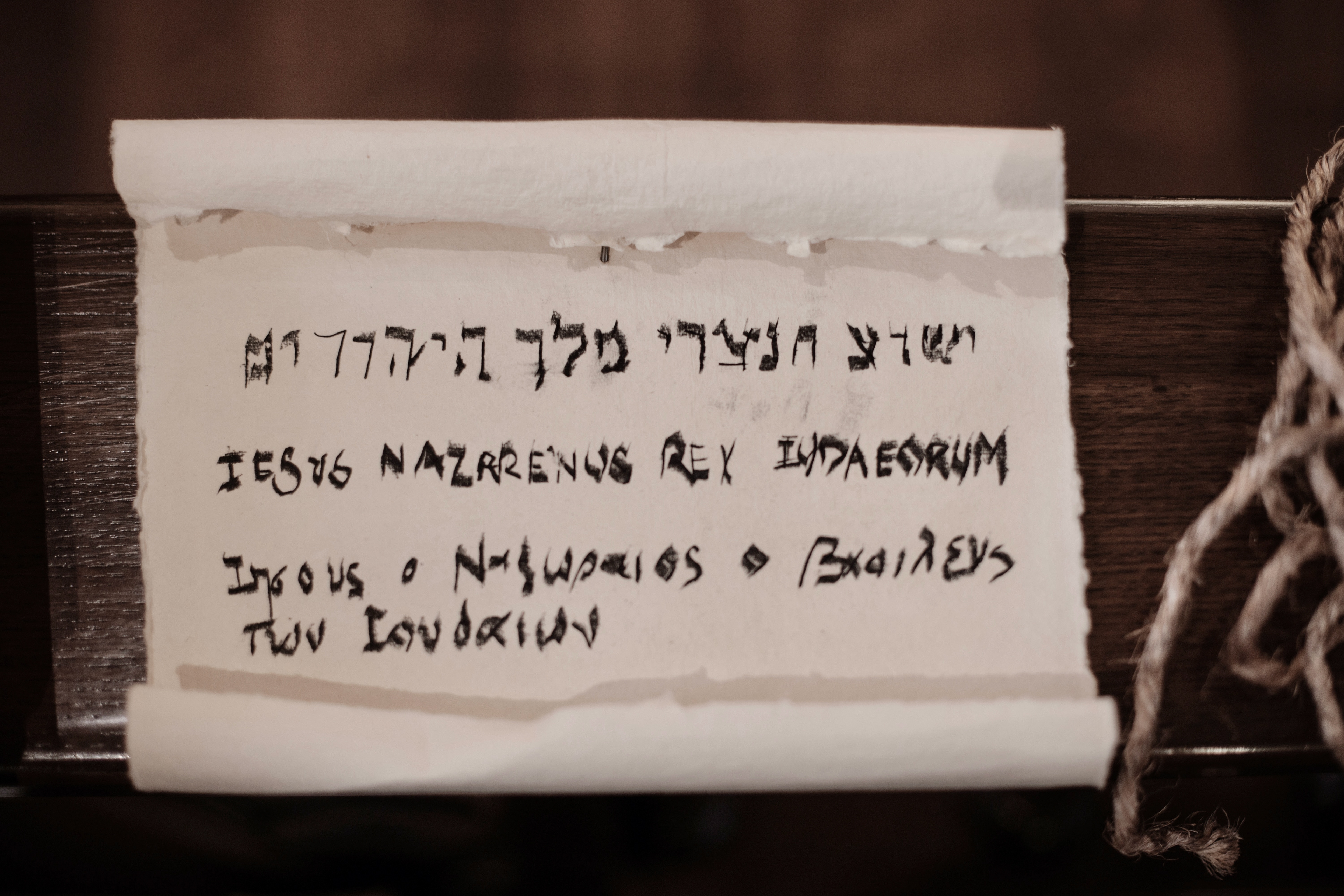
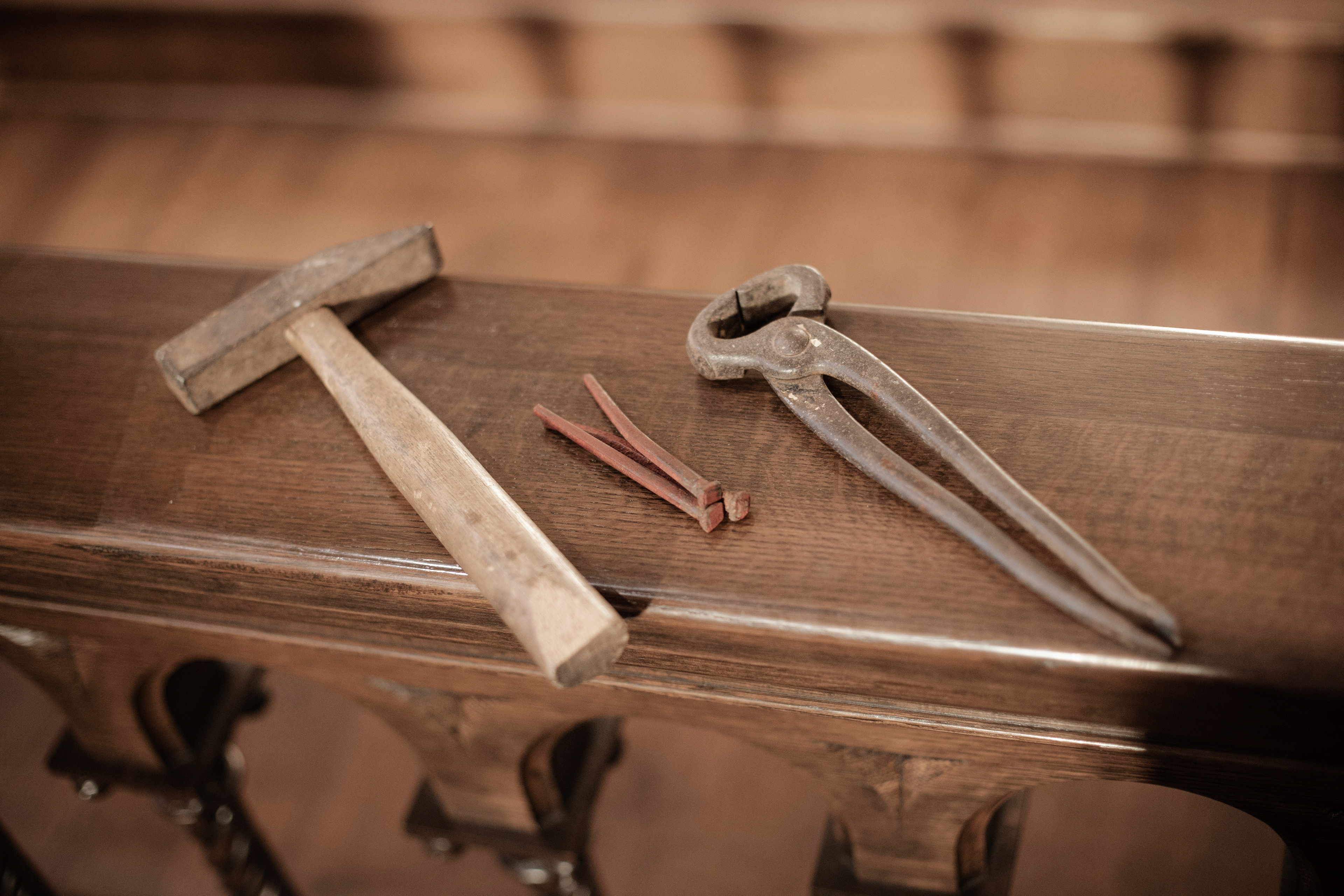
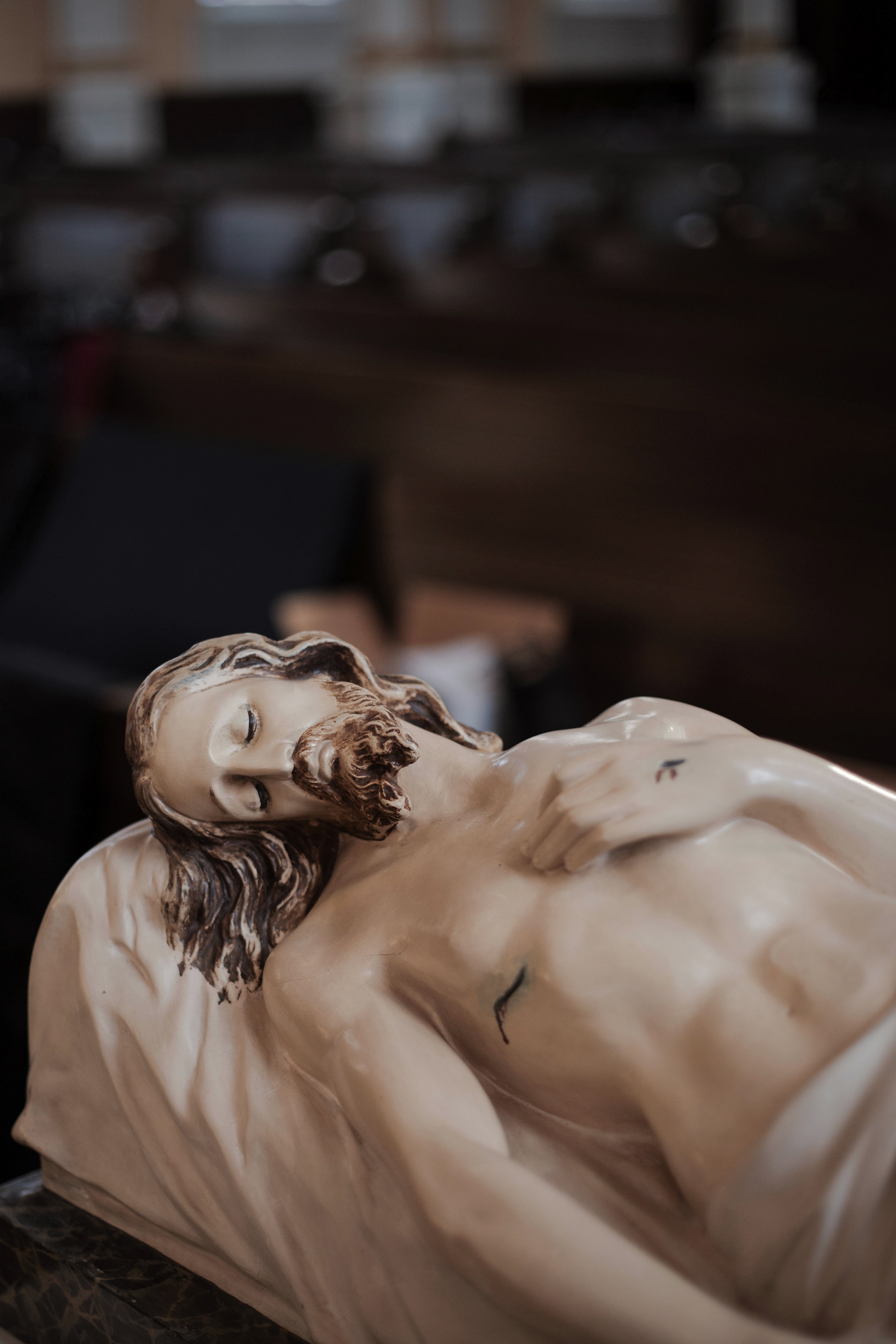
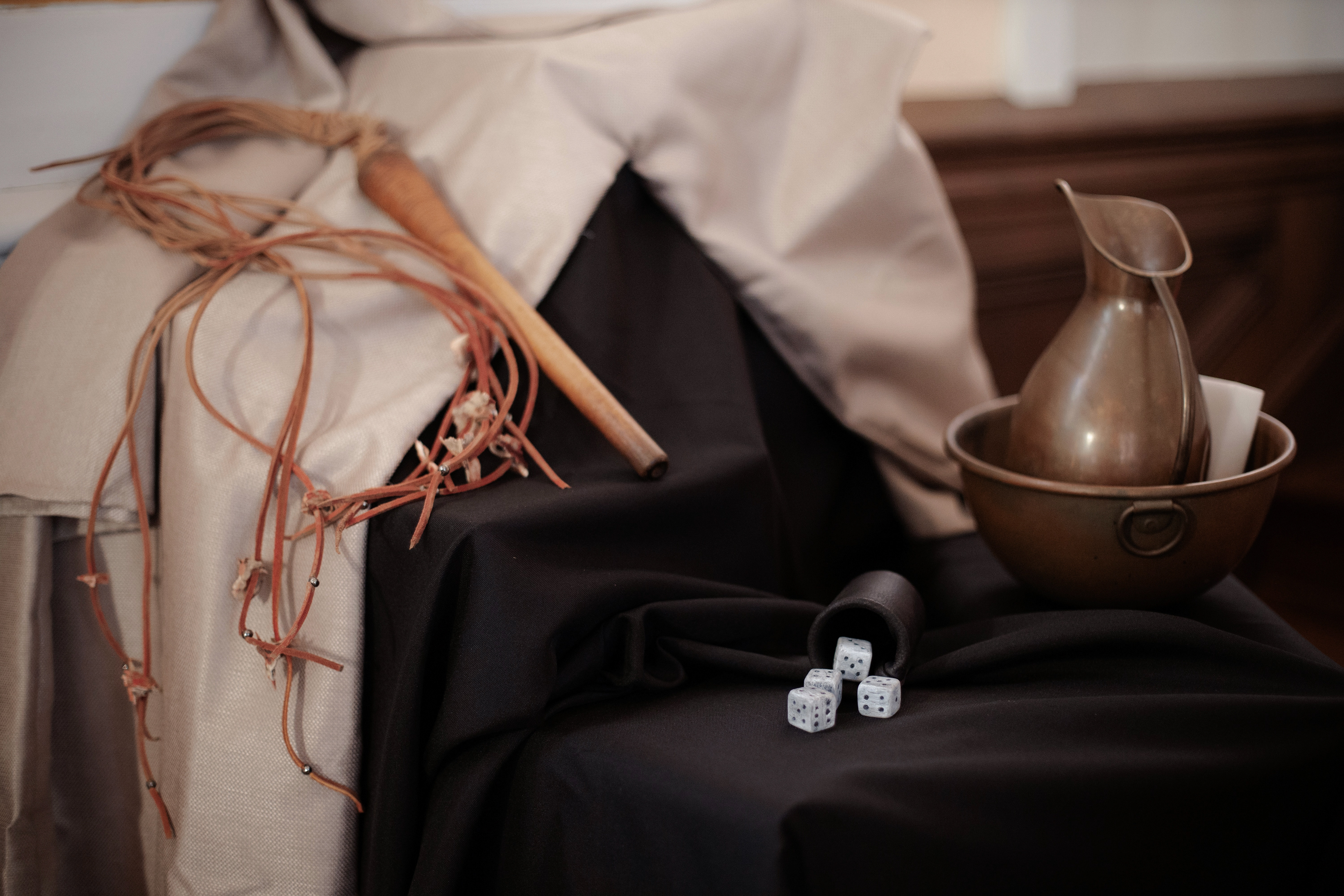
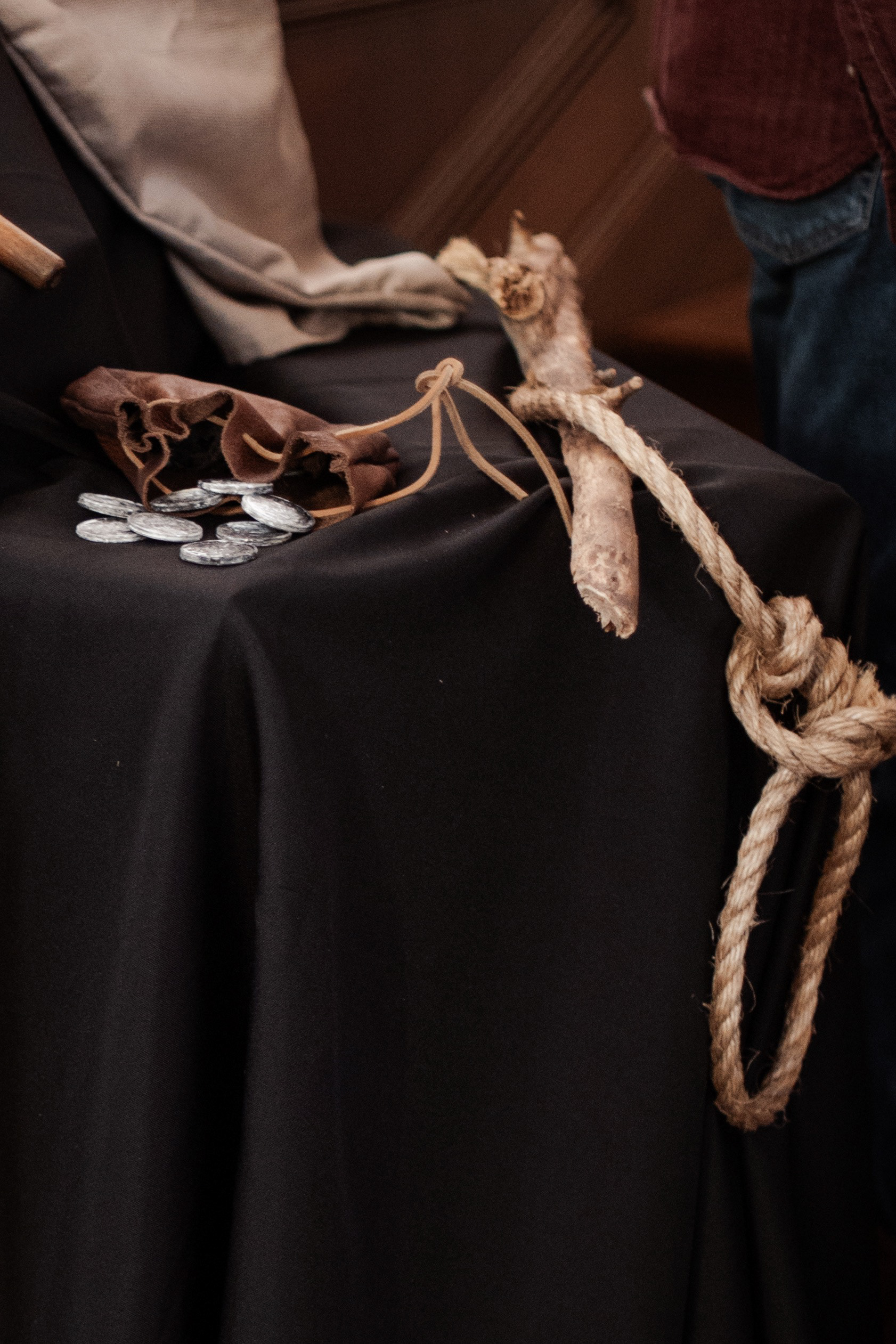
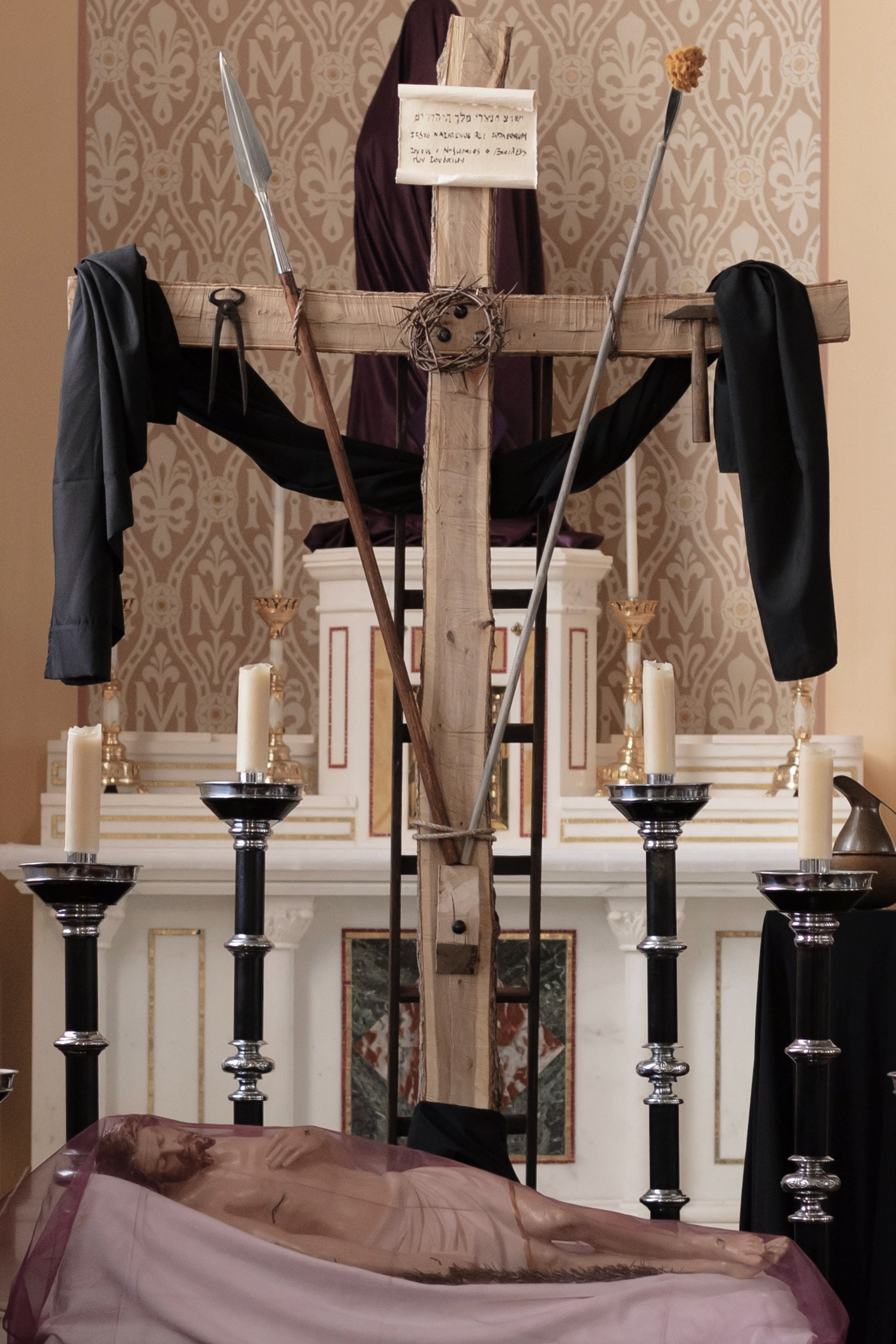
The Arma Christi (weapons of Christ, or "Instruments of the Passion") display is set up on Good Friday morning before the Oratory is opened to the public. So much care goes into every detail of this display. Every item mentioned in the Passion narratives is included: the dice, the coins, the spices, the sponge, the sign with the trilingual inscription. Even the instruments Judas used to end his own life are featured.
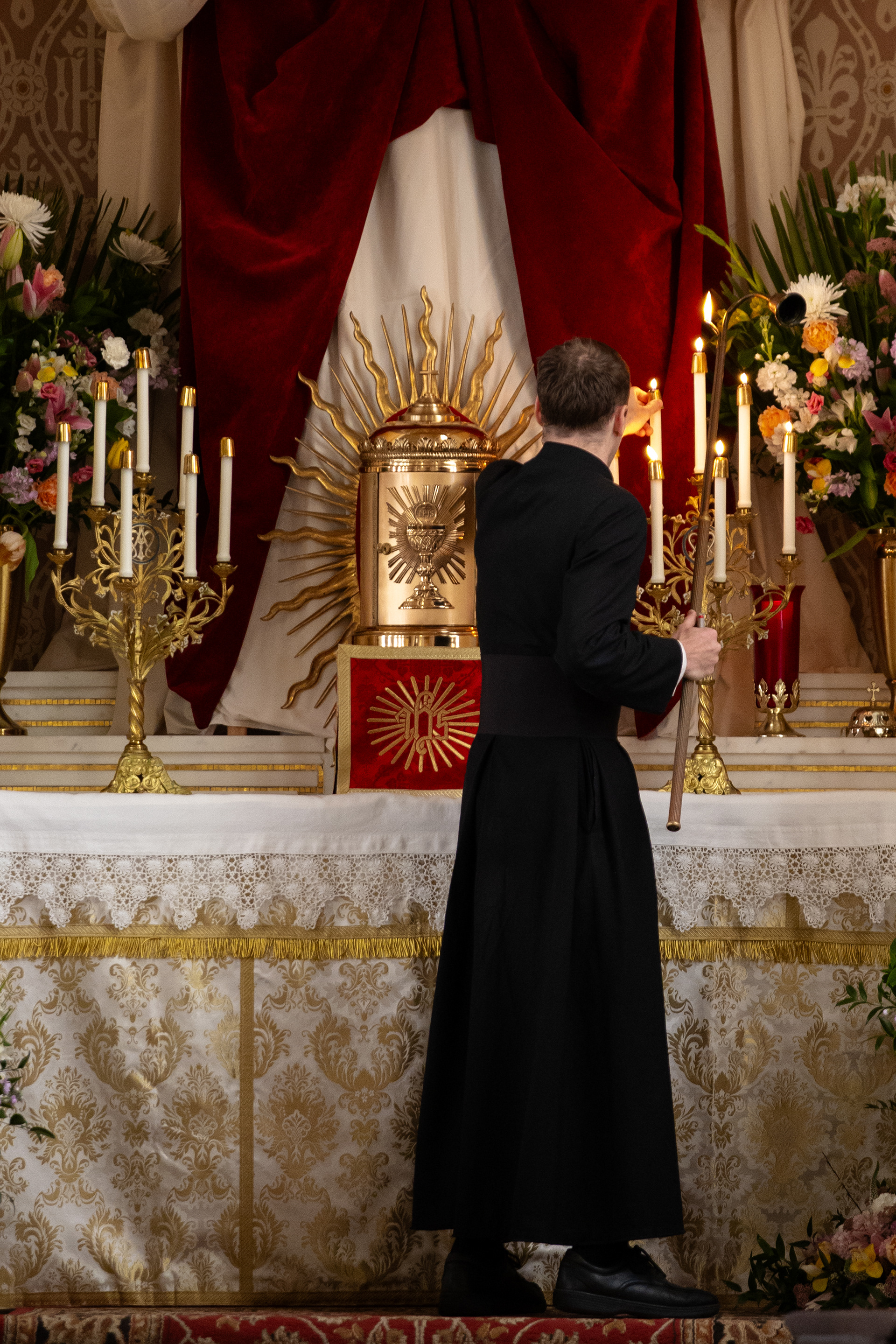
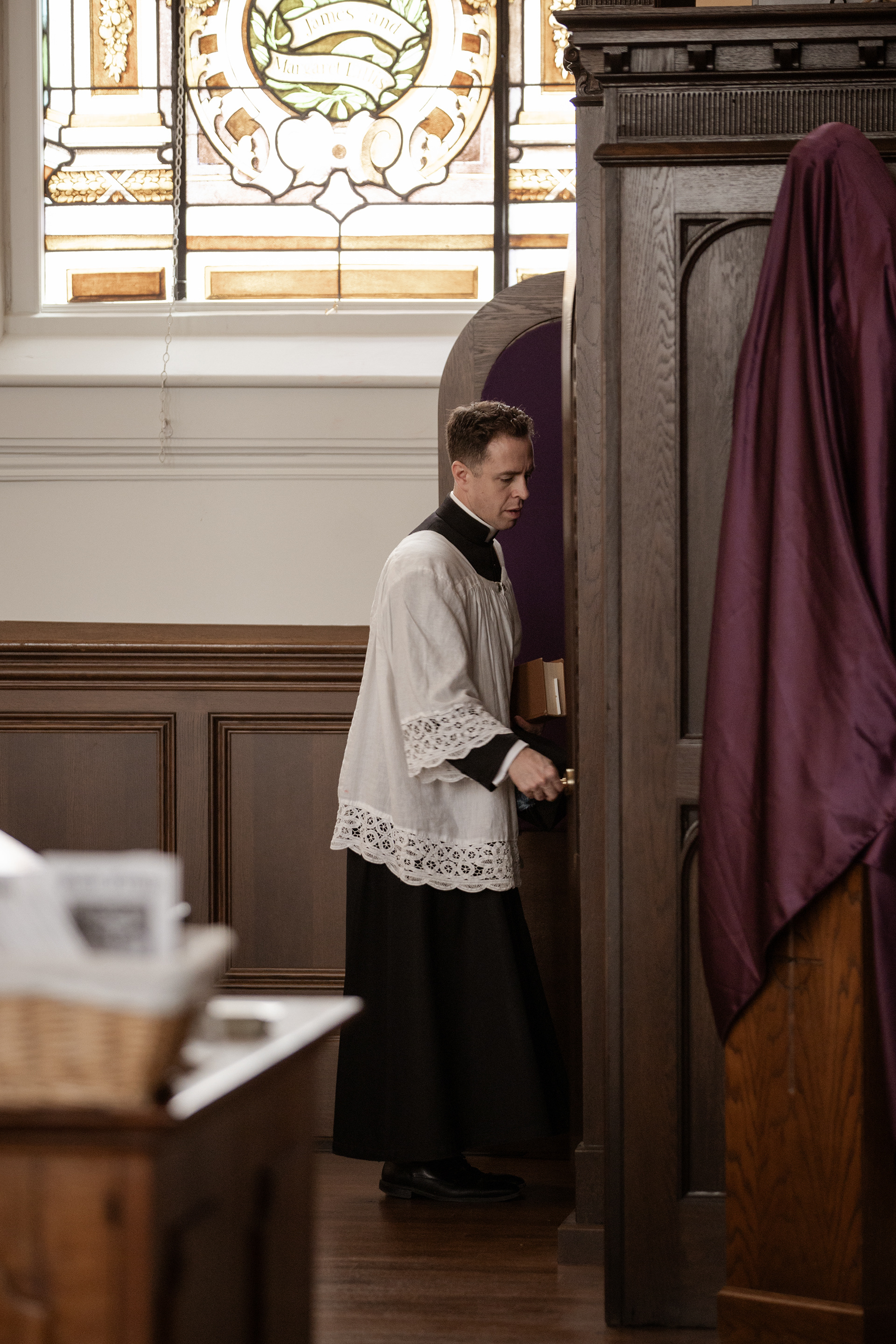

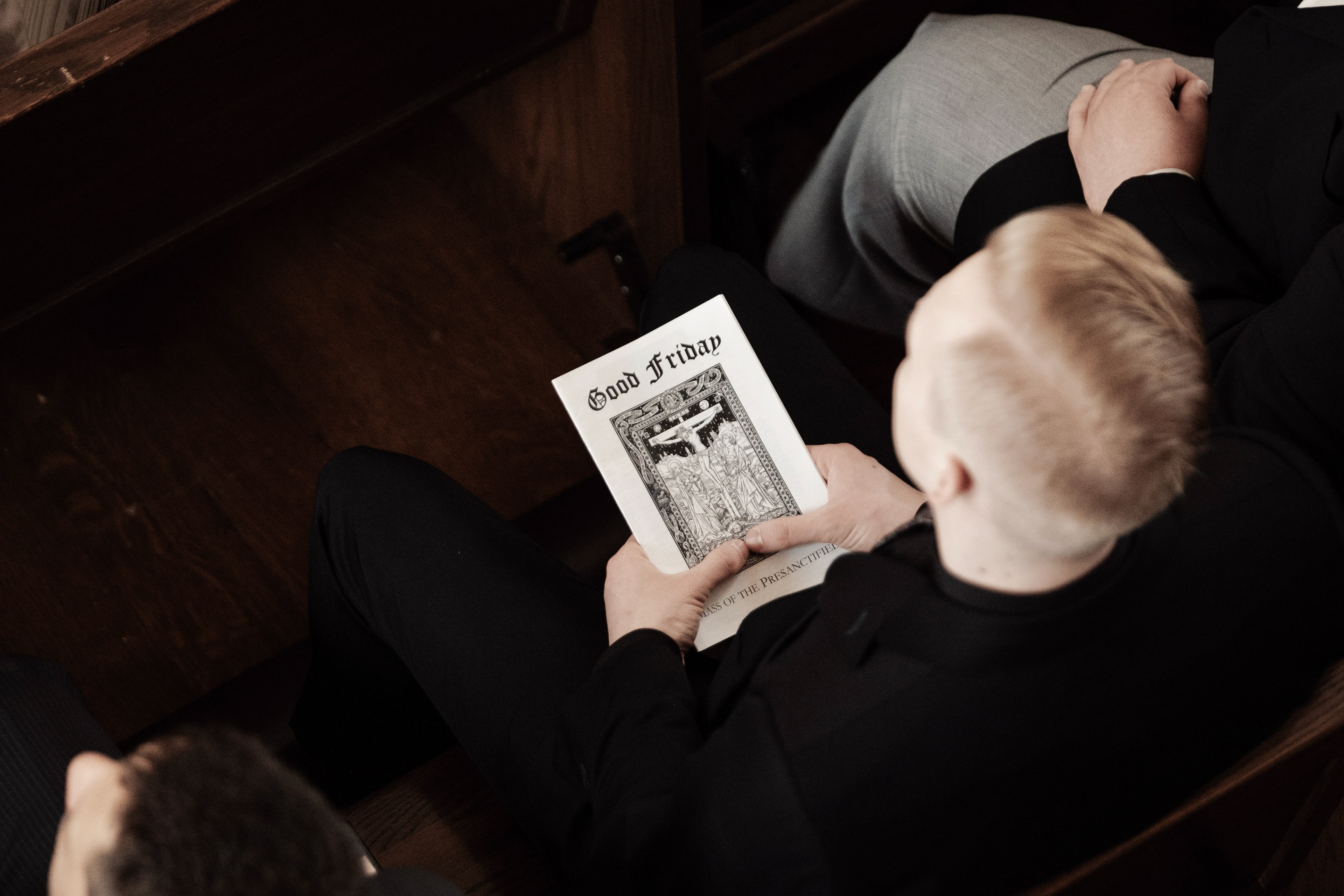
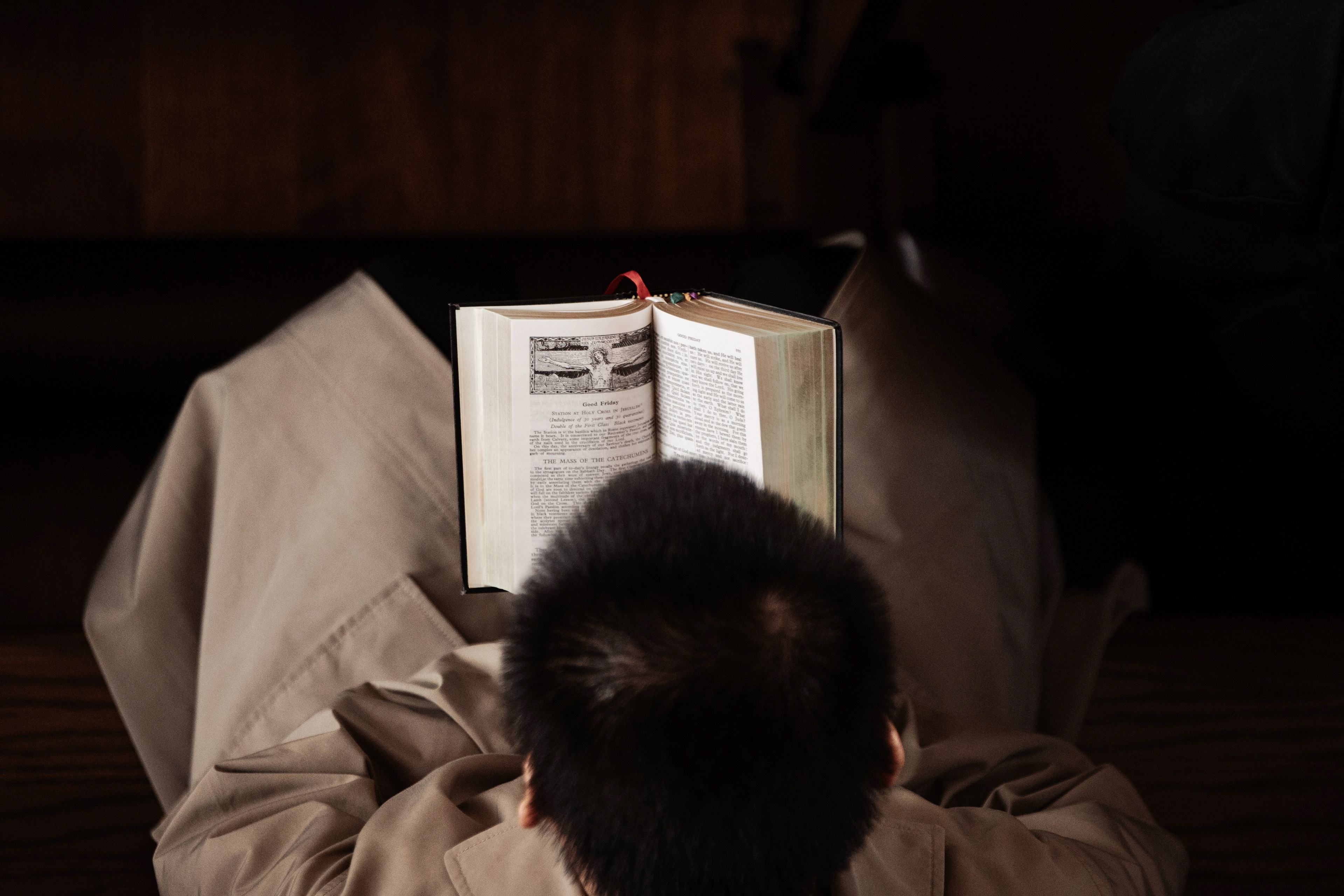

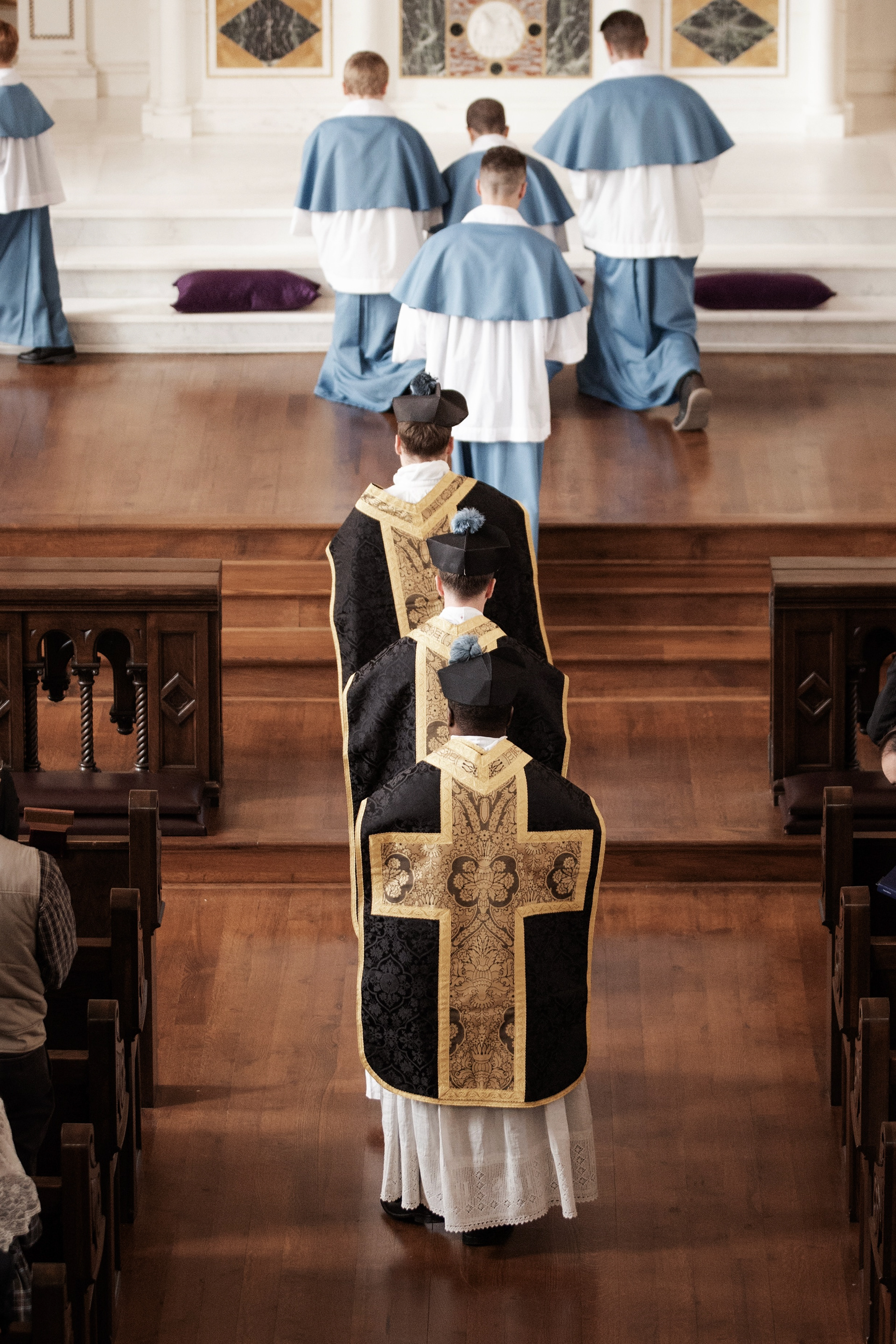
The procession enters in silence. There are no candles, incense, or processional Crucifix.
The ministers are vested in black; today the Church mourns the death of her Bridegroom.
Having reached the sanctuary, the ministers lie prostrate for a few moments. During this time, the servers prepare the altar. Instead of the three required for Mass, only one altar cloth is used, representing the linen that covered the Body of Jesus in the tomb.
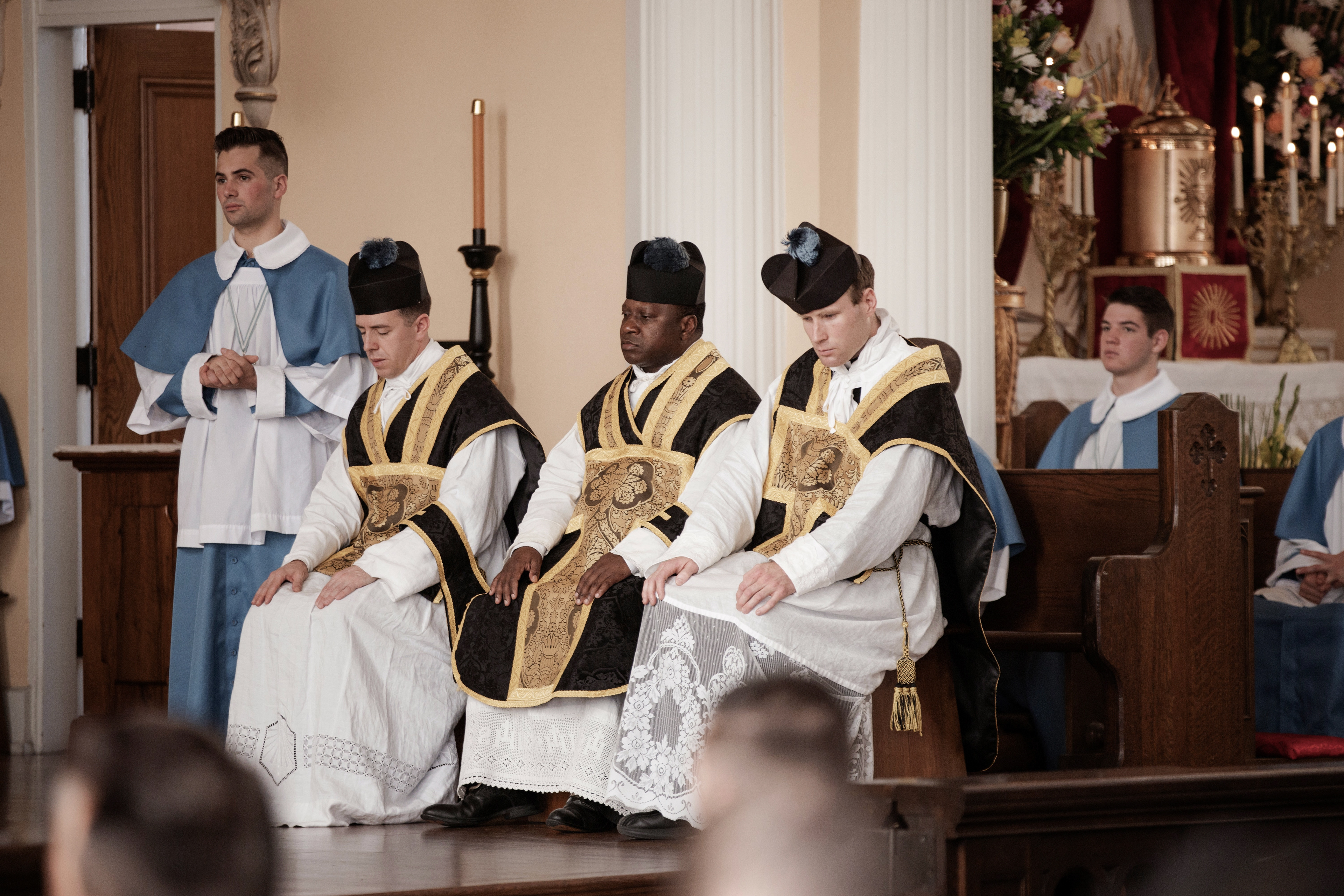
There are no Prayers at the Foot of the Altar, Introit, Kyrie, or Gloria. The liturgy begins immediately with the subdeacon chanting the Epistle. A Tract follows. The subdeacon then chants the instructions for the first Passover as given in Exodus, which is followed by another Tract.
Pictured: the ministers are seated as the choir sings the Tract.
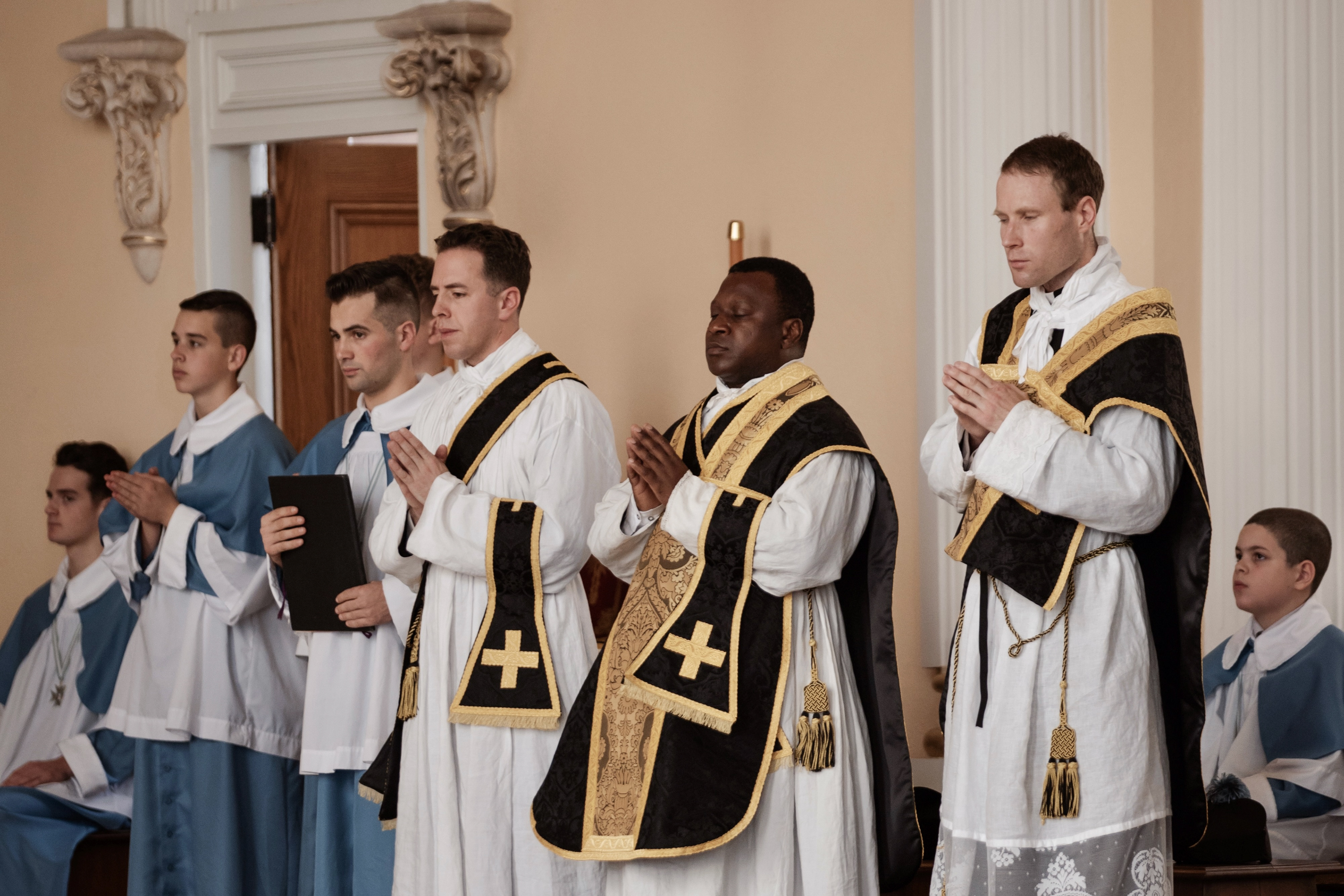
The ministers prepare to chant St. John's Passion Narrative.
"The blessing is not asked [before the Passion] because the One Who blesses all has died; candles are not carried because the Light of Paradise has gone out; nor is incense used, because the Lord died on mount Calvary, a stench-filled place of the executed where we too must leave our every sinful odor."
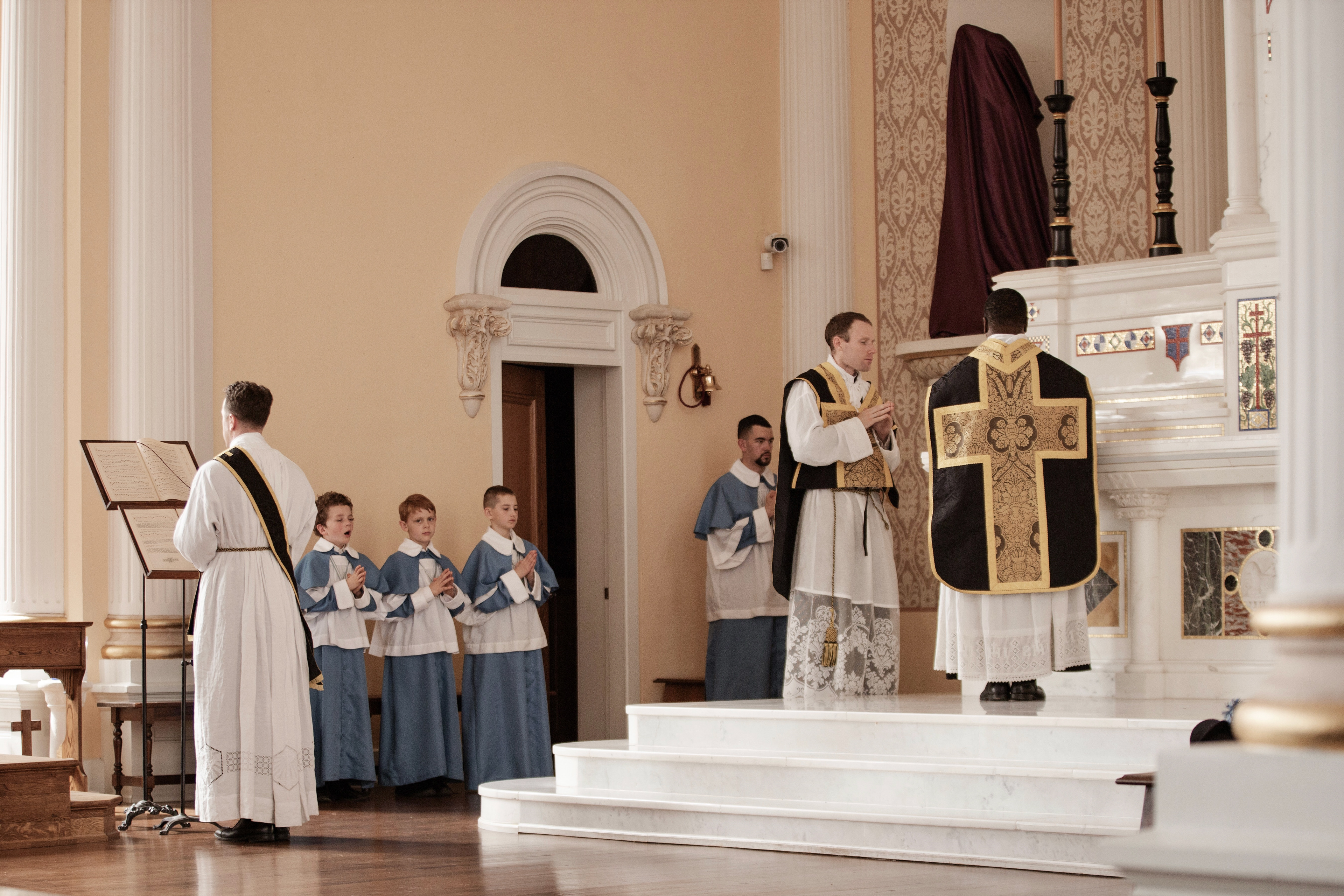
The three roles in the Passion narrative were sung by two of the ministers. The celebrant read as Christus and the deacon read as the Chronista (Narrator) and the Synagoga (Voice/Crowd). The special tones used are the same as those used on Palm Sunday.
Listen
Listen
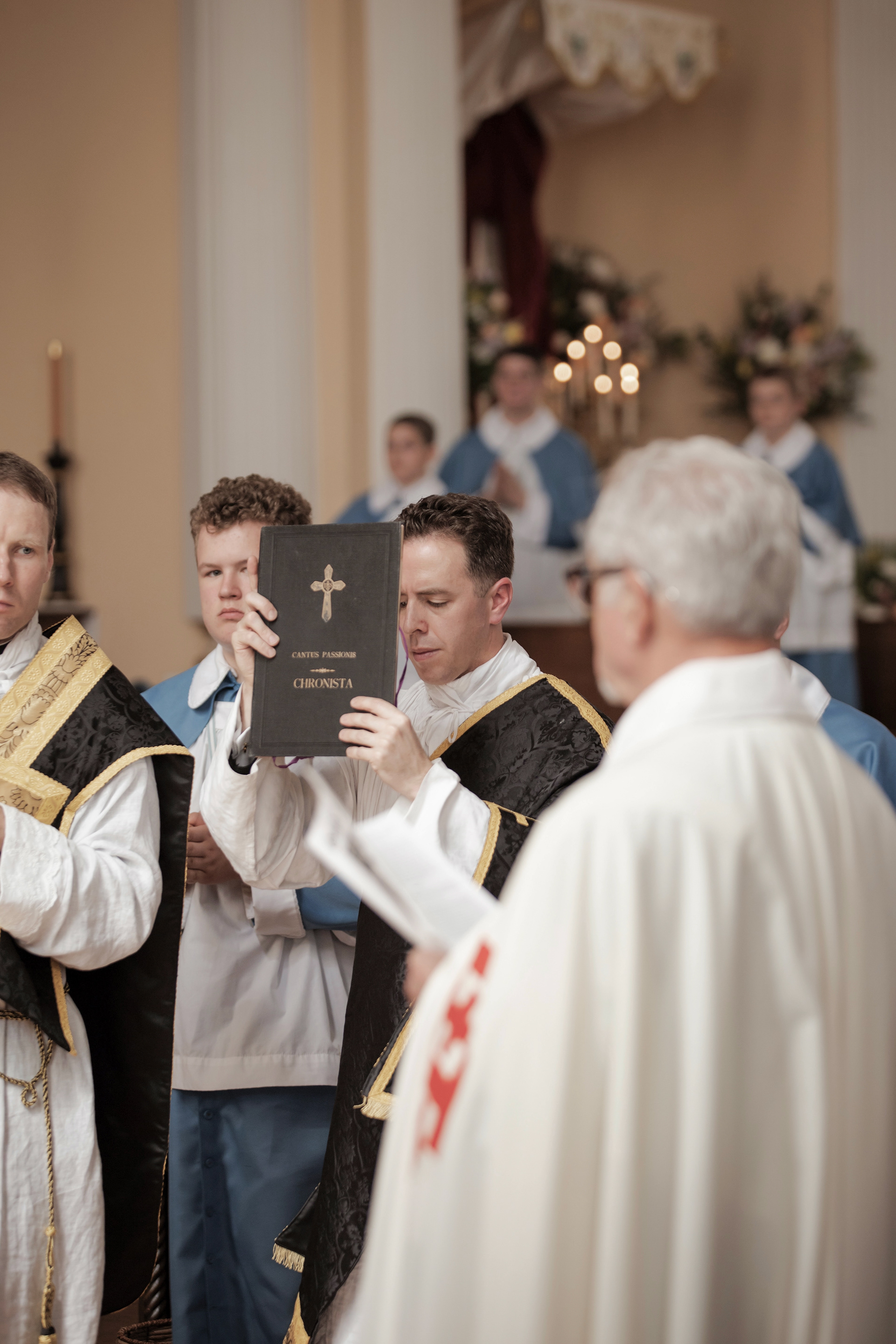
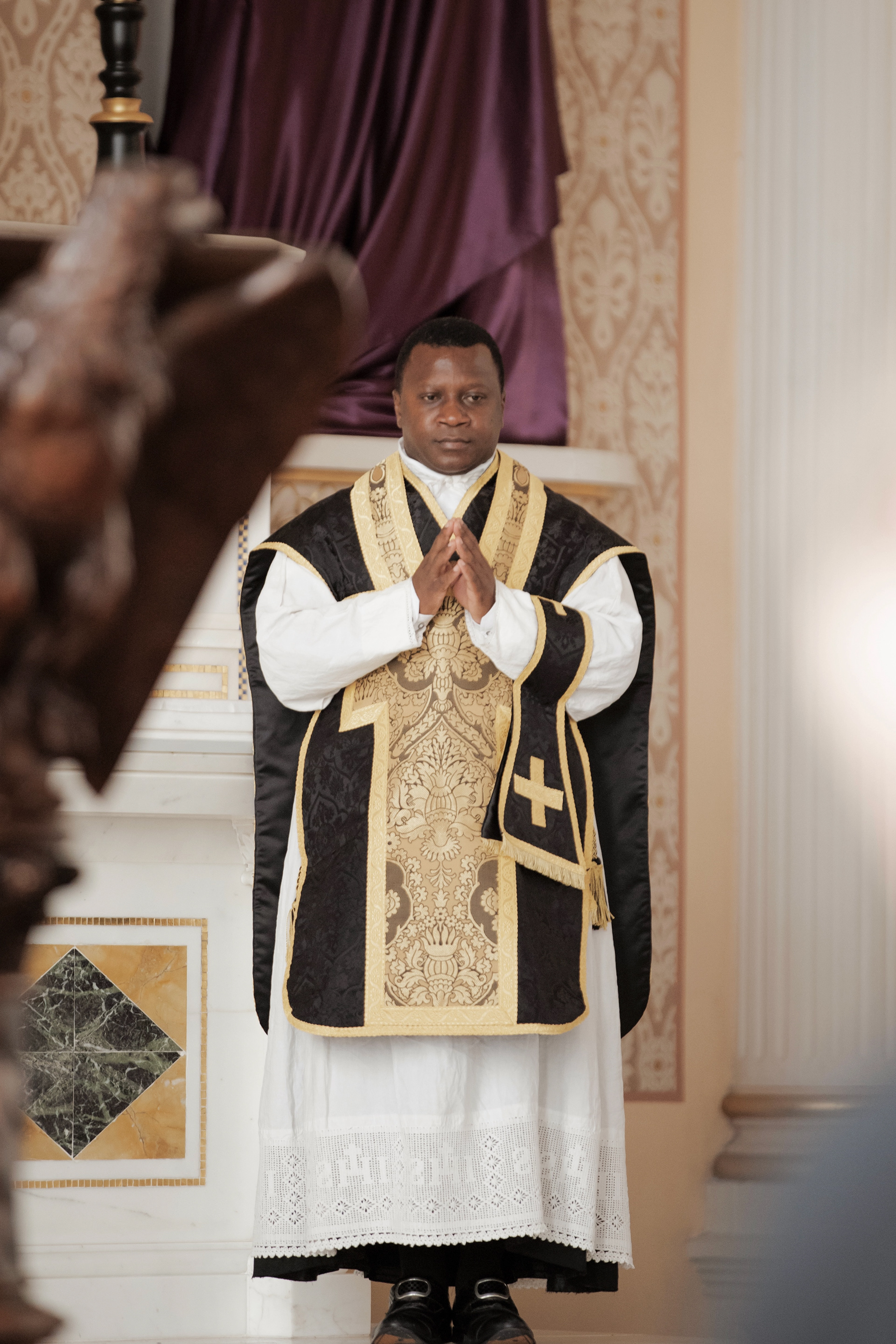
After processing to the usual place for the chanting of the Gospel without blessing, candles, or incense, the deacon chants the Gospel using the same Planctus, or weeping, tone as on Palm Sunday. After the Gospel, the celebrant is not incensed and does not kiss the book of the Gospels.
Listen
Listen
A brief sermon may be given.
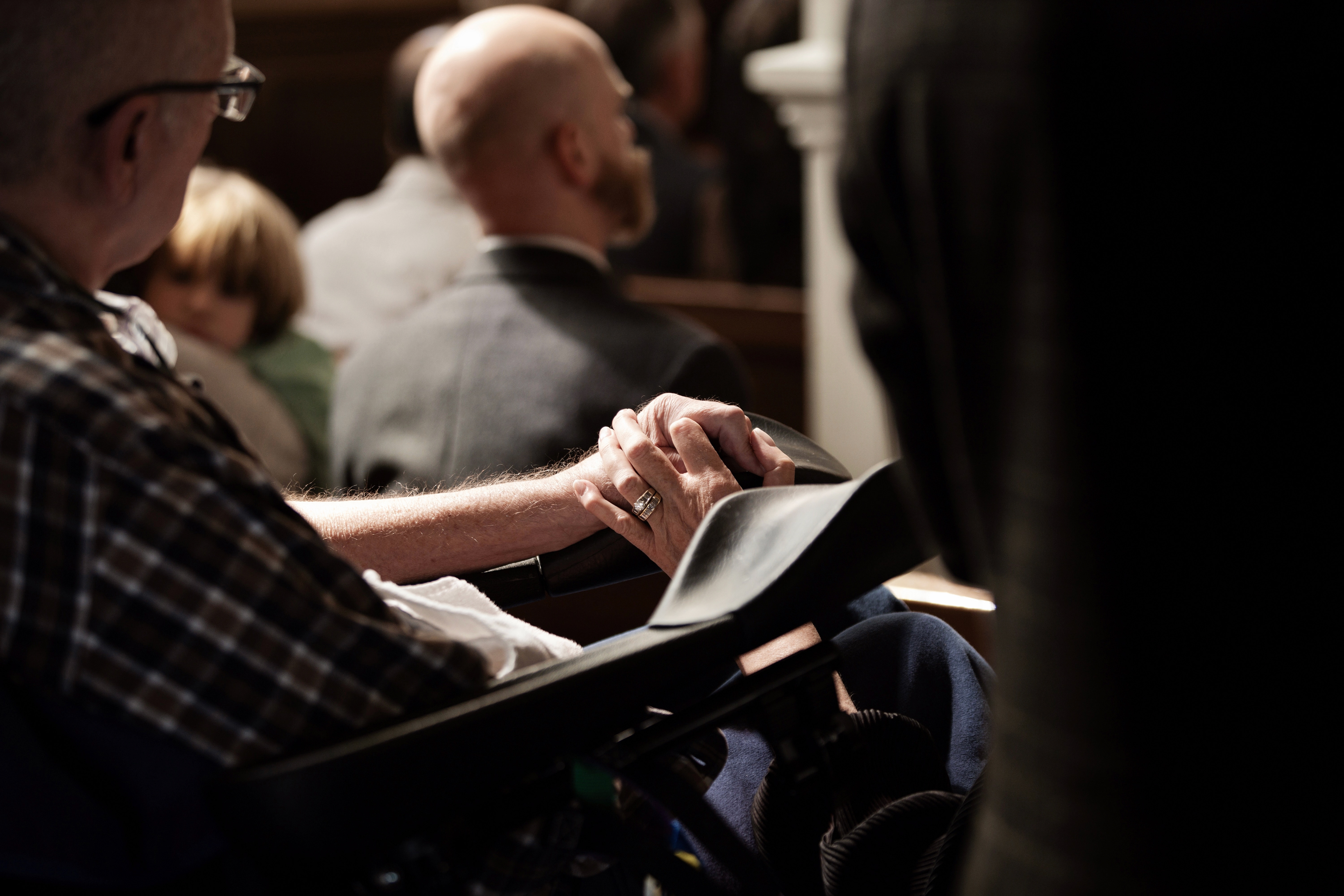
Not pictured: The Solemn Prayers (or Intercessions) have a similar structure in both the Ordinary and Extraordinary Forms, consisting of a prayer followed by a genuflection and a short pause, and ending with a Collect.
There are prayers for the Church, for the Pope, all members of the Church, catechumens, heretics and schismatics, the Jewish people, and pagans.
The Veneration of the Cross begins off the Epistle side of the altar and represents that the first preaching of the Cross was received by only the faithful disciples of Jesus.
The priest elevates the cross only slightly and sings in a low voice, "Ecce lignum crúcis in quo salus mundi pepéndit." (Behold the wood of the cross on which hung the Savior of the world.)
The choir responds, "Venite, adoremus." (Come, let us adore.)
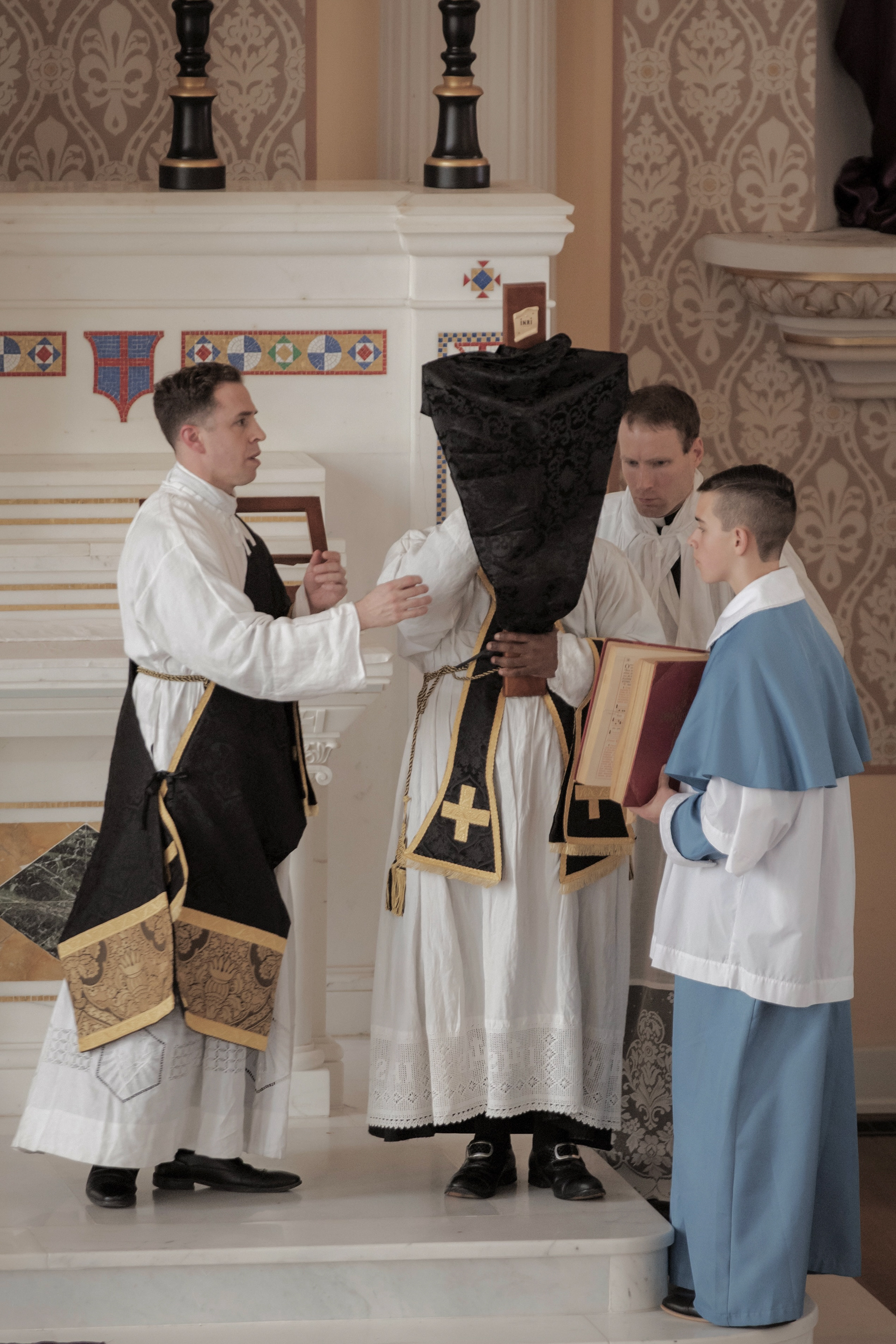
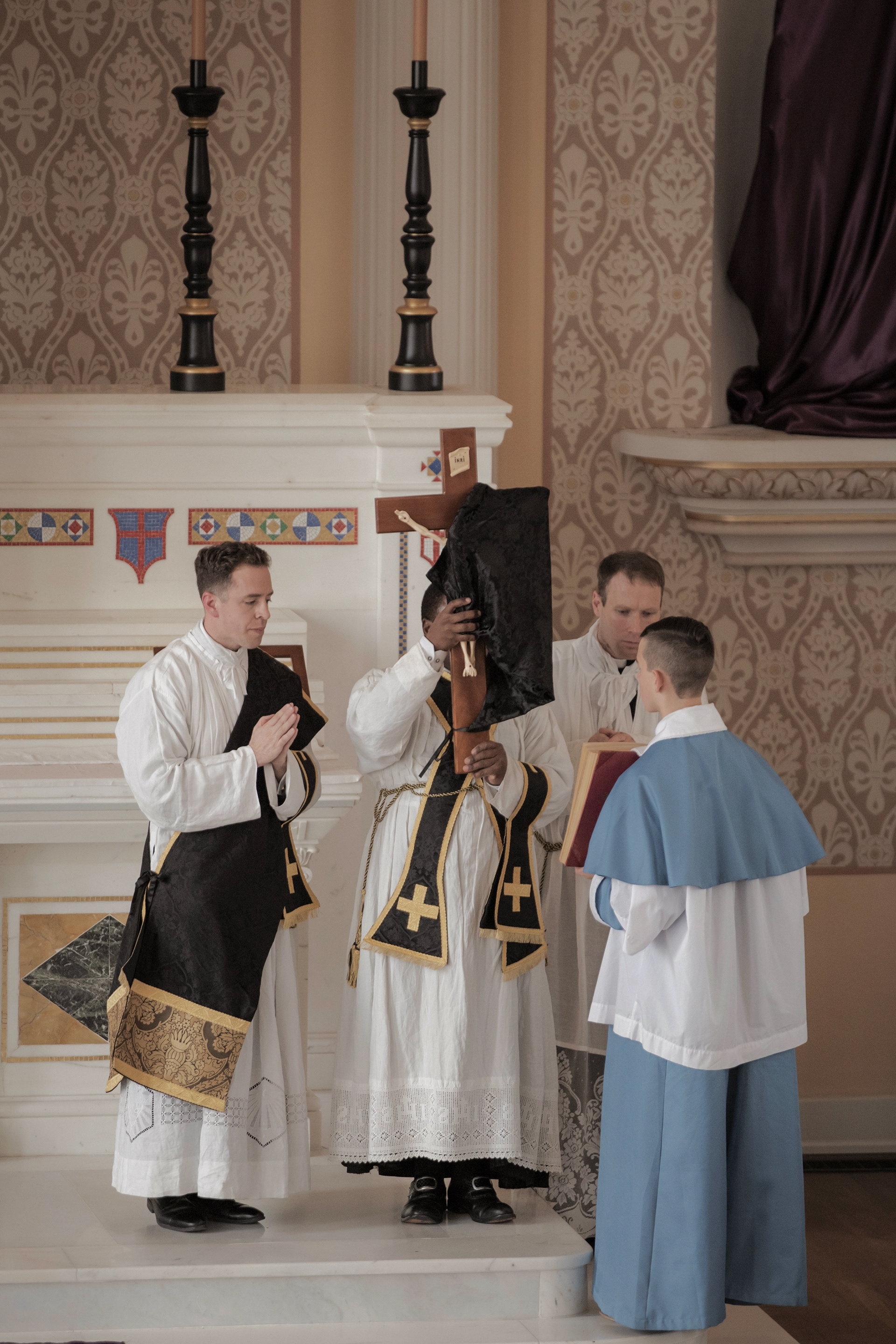
The celebrant brings the Crucifix up the steps, unveils the right arm, and sings again, this time on a higher pitch, "Ecce lignum crucis..."
This higher second elevation represents the apostles preaching and converting thousands after the descent of the Holy Ghost at Pentecost.
Bringing Him before the congregation is also meant to be an act of reparation to Our Lord for the treatment to which He was subjected when He stood before Pilate.
All present again genuflect as the choir sings, "Venite, adoremus."
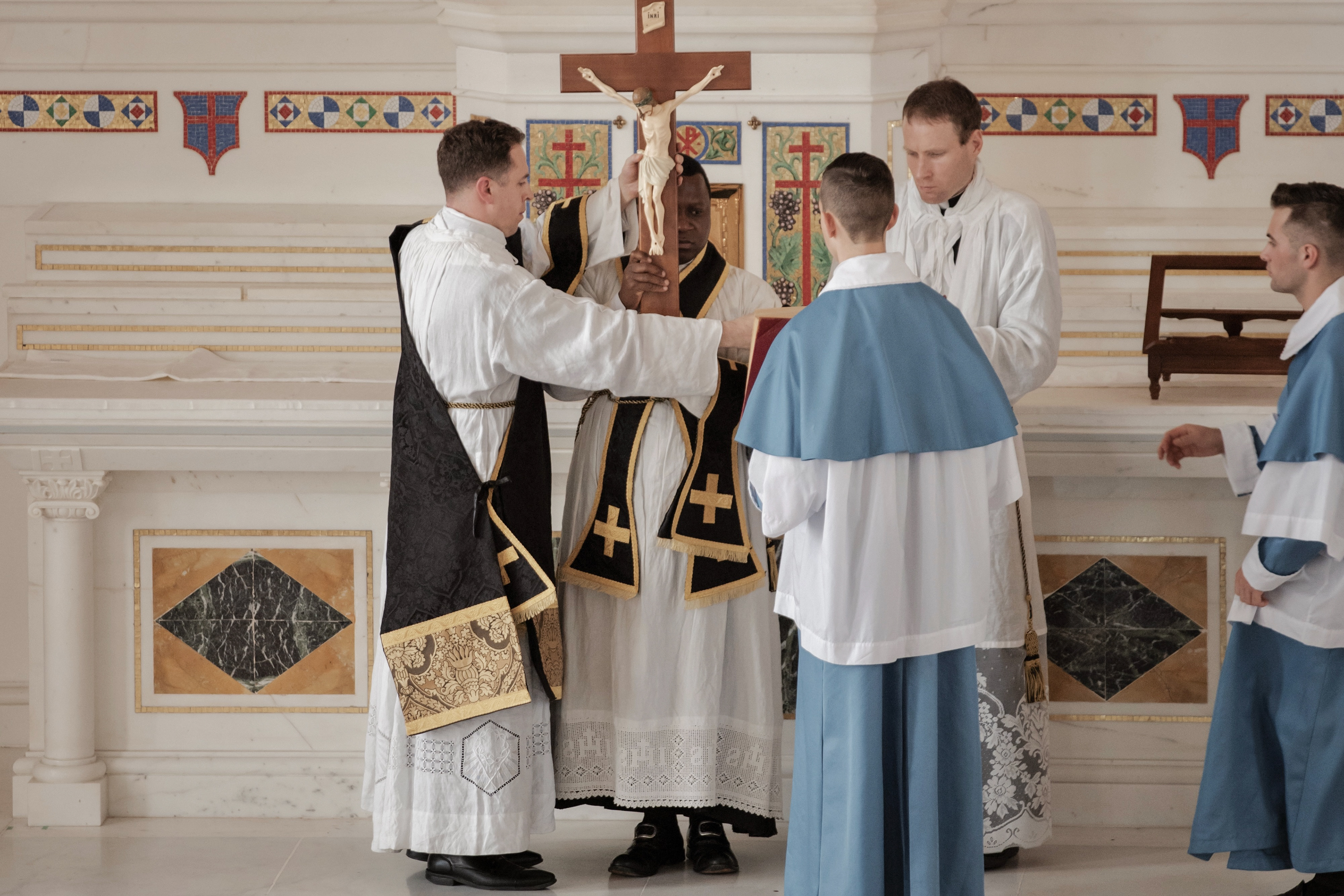
Moving to the center of the altar, the rest of the Crucifix is unveiled.
Elevating it even higher than the last time, he sings, "Ecce lignum crucis..." on a still higher pitch. The choir responds again, "Venite, adoremus."
The third elevation represents the preaching of the mystery of the cross to the whole world and is meant to be an act of reparation for the cruelty Jesus suffered on Calvary.
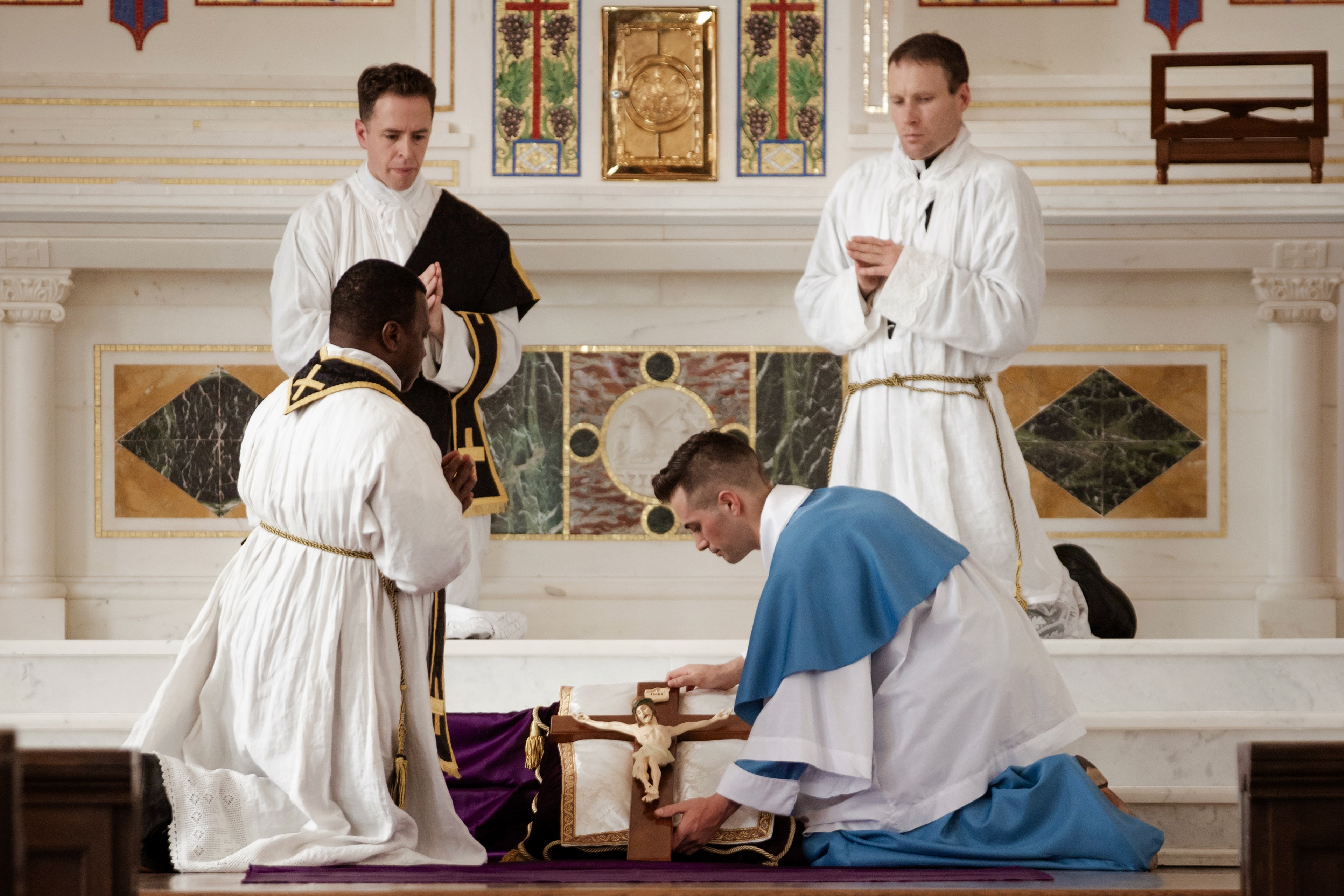
The Crucifix is laid down in preparation for the veneration. The Church invites us to not only look upon the crucified Lord, but to approach Him and kiss His Feet.
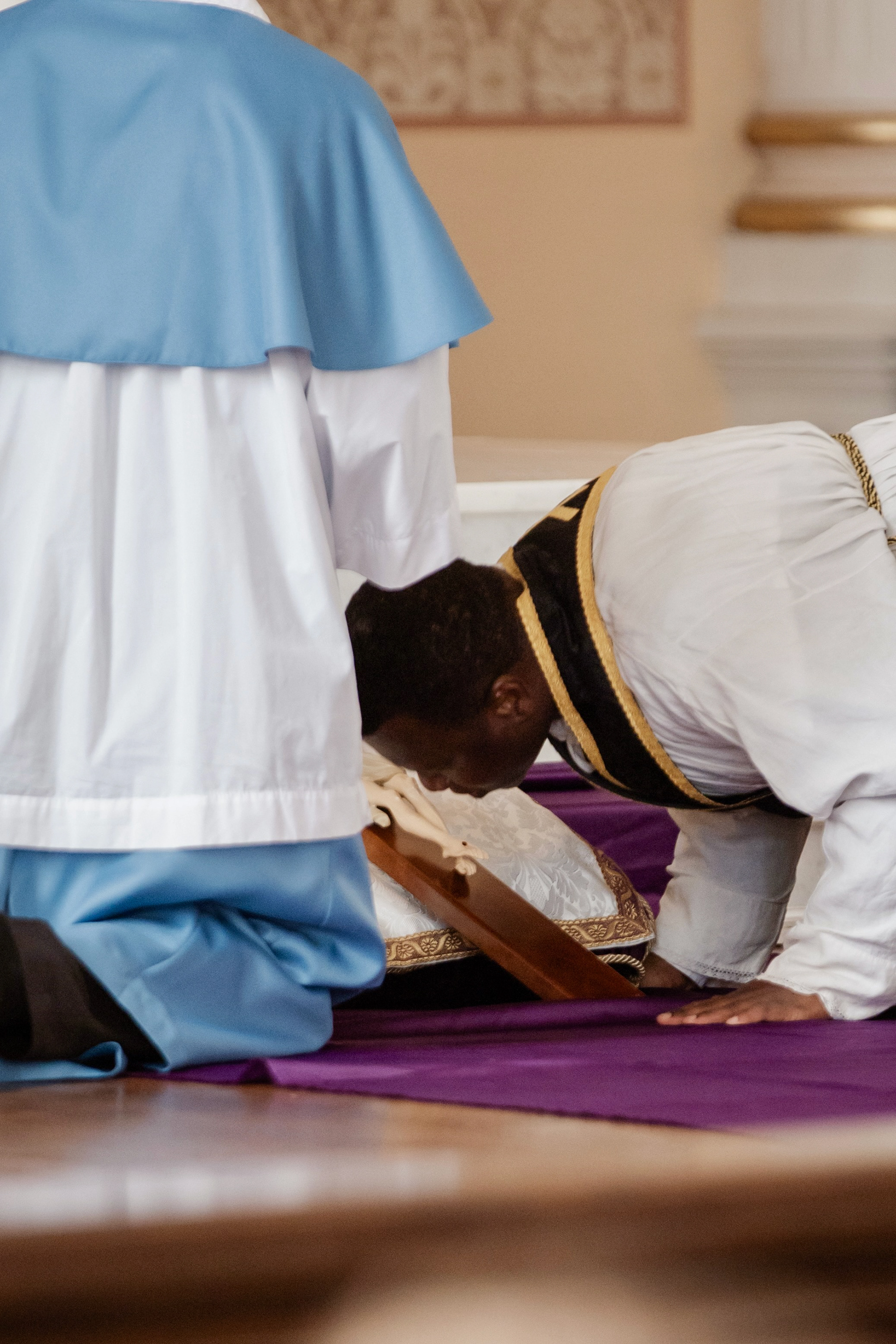

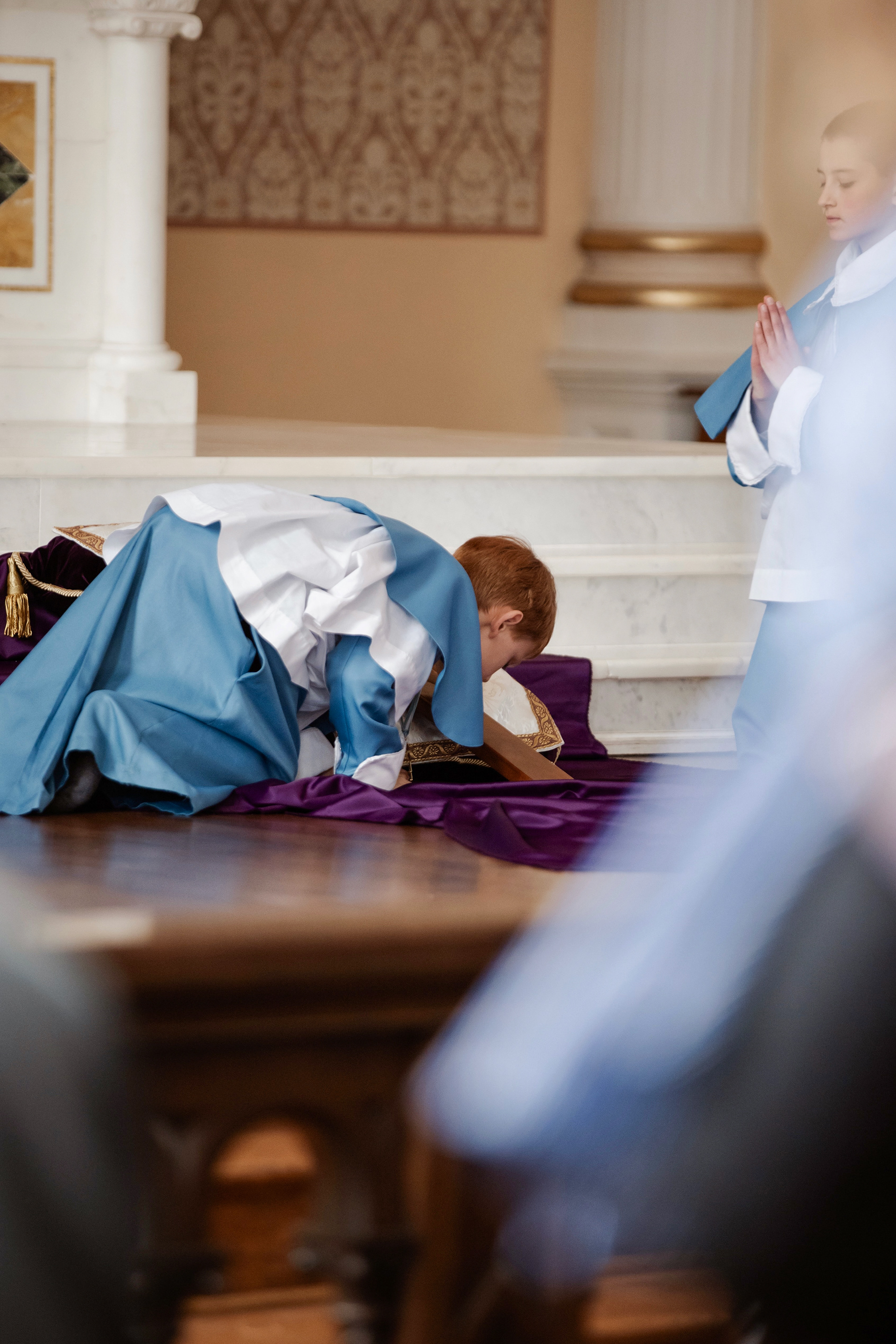
The clergy and servers remove their shoes and kneel to kiss the cross.
The choir sings three chants during the veneration. The most familiar is the Improperia or "Reproaches", which recount what God did for His people throughout the course of salvation history: "I led you through the desert, fed you manna, struck down the firstborn of the Egyptians, parted the sea...and you have prepared a cross for your Savior."
"Popule meus, quid feci tibi? Aut in quo contristávi te? Respónde mihi!"
(O My people, what have I done to you? How have I offended you? Answer me!)
(O My people, what have I done to you? How have I offended you? Answer me!)
Upon completing the Reproaches, the choir continues:
"Crucem tuam adorámus, Dómine: et sanctam resurrectiónem tuam laudámus, et glorificámus: ecce enim propter lignum venit gáudium in univérso mundo."
(We adore Thy Cross, O Lord, and we praise and glorify Thy holy resurrection: for behold by the wood of the Cross, joy came into the whole world.)
(We adore Thy Cross, O Lord, and we praise and glorify Thy holy resurrection: for behold by the wood of the Cross, joy came into the whole world.)
"Dulce lignum, dulces clavos, dulcia ferens póndera."
(Sweet the wood, sweet the nails, sweet the weight that hung on thee.)
(Sweet the wood, sweet the nails, sweet the weight that hung on thee.)
After the veneration, the Crucifix is placed on the altar and all other Crucifixes in the church are unveiled.
*Liturgy Note: From this point until the Blessed Sacrament is returned to the tabernacle during the Easter Vigil, the altar Crucifix is the point to which we genuflect.


The Blessed Sacrament is brought from the altar of repose as the choir sings the hymn Vexilla Regis.
"O crux, ave, spes unica!"
(Hail, O Cross, our only hope!)
(Hail, O Cross, our only hope!)
As on Holy Thursday, the crotalus replaces the bells in announcing the approach of the Lord.
The Mass of the Presanctified is called such because there is no consecration. The Host that is used was consecrated the day before and is thus presanctified.
The chalice is prepared as usual with water and wine, but it will not be consecrated today. The offering is incensed, but not the celebrant.
The Lavábo and Orate Fratres are said, but the usual response is not given to the latter. The Pater Noster immediately follows.
After the Pater Noster, the priest elevates the Host with only one hand so that the people may see and adore Him.
He breaks the Host into three parts, one of which is placed into the wine in the chalice. This does not transubstantiate the wine into the Blood of Jesus, but it gives a very special blessing.
*Photography Note: This single-handed elevation represents the moment of the death of Christ. I knew even before Triduum began that I wanted the photo of it to contrast as much as possible with every other elevation shot I’ve done as well as with all of the other Triduum photos, and chose to make it the only monochromatic photo from the whole week.
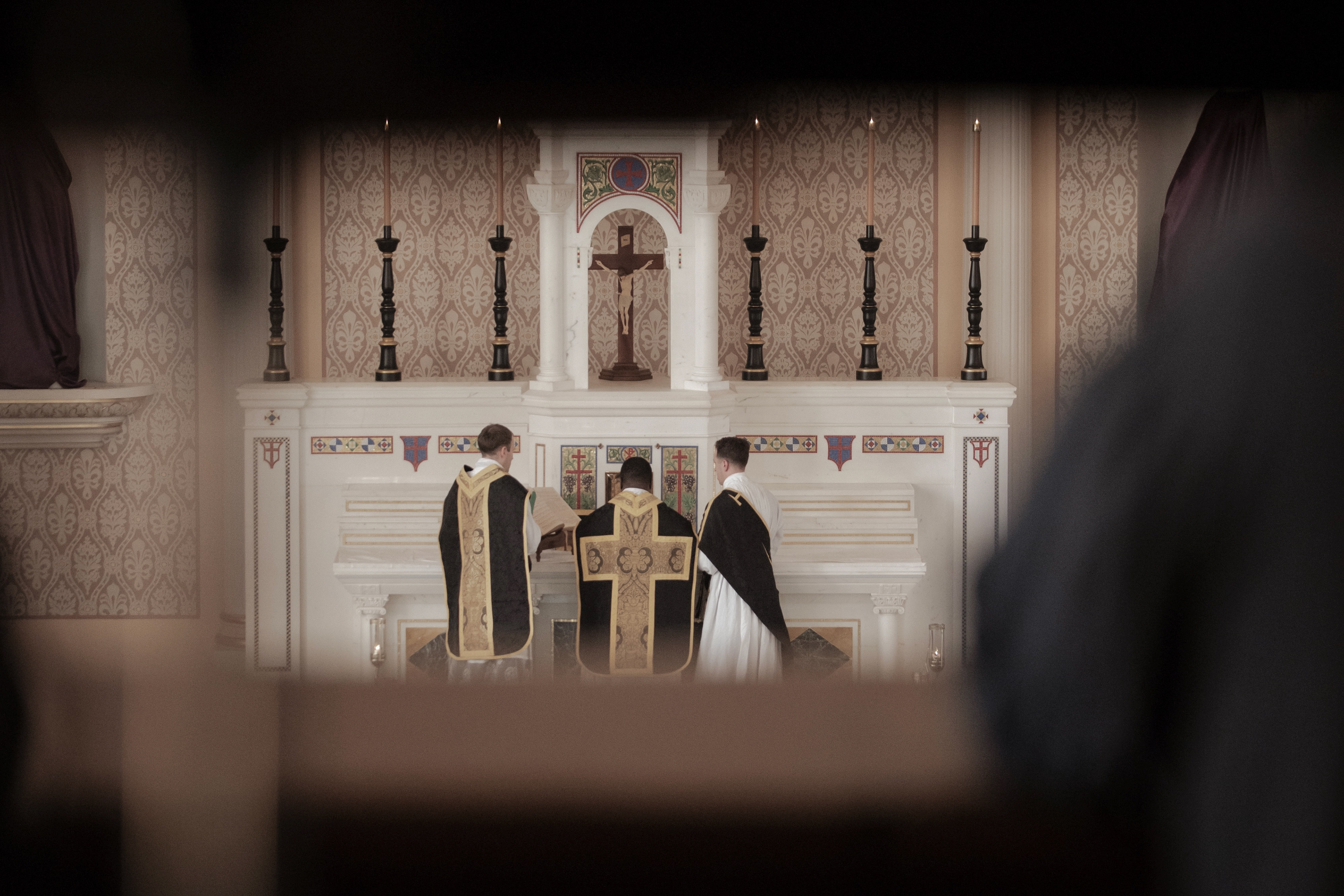
After the priest says the triple "Domine, non sum dignus," he consumes the Host and the wine, water, and fragment of the Host in the chalice.
This is the only day in the liturgical year that the Eucharist is not distributed to the people.
The celebrant purifies his hands and recites a final prayer in secret (quietly). The Mass of the Presanctified ends without a blessing over the congregation.
The Stations of the Cross followed the liturgy.
"Adorámus Te Chríste, et benedícimus tibi, quia per sanctam crucem tuam redemísti mundum."
(We adore Thee O Christ and we bless Thee, because by Thy holy Cross Thou hast redeemed the world.)
(We adore Thee O Christ and we bless Thee, because by Thy holy Cross Thou hast redeemed the world.)